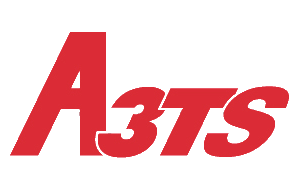Zinc and Zinc/Calcium phosphating on steel
N.B.: The information contained in this sheet comes from reliable sources. Nevertheless, it is provided without any guarantee, express or implied, of its accuracy.
Principle:
This is a chemical conversion treatment called Zinc or Iron-Zinc phosphatization. Variations of bath compositions lead to tri-cation phosphatizations called Zinc-Calcium phosphatizations.
The treatment is carried out by immersion in an acid bath containing phosphate ions and Zinc ions (and possibly Calcium). The steel is partially dissolved and a layer of mixed Iron and Zinc phosphates [Zn2Fe(PO4)4, 4H2O] and Zinc phosphates [Zn3(PO4)4, 4H2O] is precipitated.
Zinc phosphating must be followed within a very short time (a few hours) by painting. Otherwise, the steel corrodes on the extreme surface, which leads to poor paint adhesion.
SUBSTRATE
Ce traitement n’est applicable que sur aciers avec une teneur en éléments d’alliages < 5%.
FUNCTIONAL APPLICATIONS
This treatment is recommended for parts where good paint adhesion is required.
This treatment is not recommended for parts that are not completely painted. Indeed, the unpainted areas would not be protected against corrosion. If the part is to be partially painted, a Manganese phosphatization should be chosen.
Paint adhesion is highly dependent on several factors
Reliability of the process and surface preparation
Coat weight
The waiting time between phosphating and painting should be minimal. It is desirable that phosphating and painting be done on the same site.
Any moisture regain through phosphating must be avoided before painting for solvent-based paints.
These factors are necessary to ensure good paint adhesion.
THICKNESSES
The thickness of the treatment is not a usual criterion. The criterion used is the coating weight. The only reference standard NF A91-501, NF ISO 9717 - 07/13 indicates a coating weight between 1 and 30g/m² for Zinc and Zinc / Calcium phosphatizations.
However, we would like to point out that very high layer weights can lead to non-compliant paint adhesion tests.
USER SECTORS General mechanics, automobile, armament, transport ...
ENVIRONMENTAL IMPACT
Zinc phosphating generally does not use substances that are currently subject to human health regulations or environmental hazards.
However, some formulations use nickel salts. These substances are not yet regulated by REACH, but are under discussion for classification in Annex XIV or XVII.
INDICATIVE PERFORMANCE
Ability to rub
No
Increase in surface hardness
No improvement
Ability to be painted
Corrosion resistance (salt spray)
Good
2H BS before Oxidation Red without paint
Without, if mechanical preparation
Hydrogen Fragilization
REFERENCE
NF A91-501, NF ISO 9717 - 07/13 - Metallic and other inorganic coatings
Phosphate conversion coatings on metals
NF A91-474, NF EN ISO 3892 - 11 / 01- Conversion coatings on metallic materials
Determination of the coating mass per unit area - Gravimetric methods
The information contained in this fact sheet has been obtained from reputable sources. Nevertheless, it is provided without any guarantee, express or implied, of its accuracy
Implementation
Main equipment (furnace, reactor, line, machine...)
If you are a company interested in being listed on this page, please contact us: a3ts@a3ts.org
